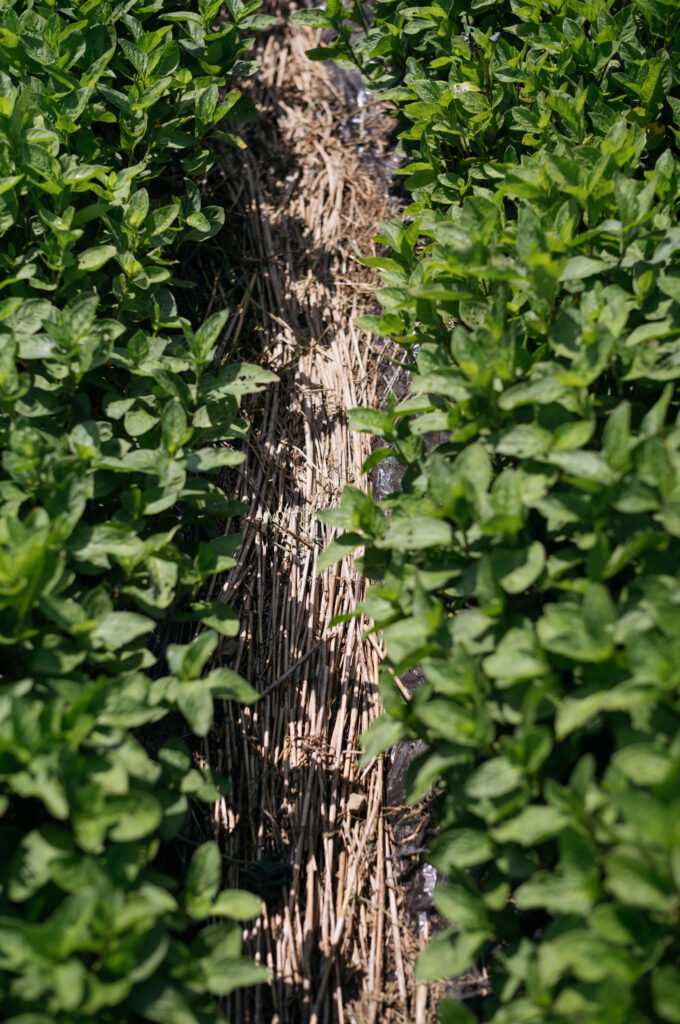
The revival of indigo cultivation
Minori-no-Mori Indigo producer’s association
(Mima city, indigo cultivation)
Kirikubo village is located in Mima town, Mima city.
In summer, fields on the slopes are covered with bright green leaves.


These fields are planted with Tade-ai, whose leaves are used for indigo dyeing.
Notably, the indigo cultivated here also serves as a food source.


The Awa domain has promoted indigo cultivation in the Yoshino River basin since the Azuchi-Momoyama period.
From the mid-Edo period until the late Meiji period, indigo cultivation flourished due to increased demand.
However, indigo cultivation declined following the importation of cheaper indigo from India.



In recent years, scientific research revealed that indigo contains antioxidants (indigo polyphenols and flavonoids) that neutralize active oxygen, and a bactericidal substance (triptansulin). The use of indigo as a potential health food is also expected.


In Mima City, eight farmers have formed the “Minori-no-Mori Indigo Producers’ Association” to cultivate indigo.
Five of them are located in the mountainous Kirikubo village.
The farmers in the Kirikubo village plant seedlings in May and harvest the indigo leaves from July to August.
Thereafter, the harvested indigo leaves are dried at a factory to render them suitable for consumption.
The newfound value of indigo as an edible product has contributed to the revitalization of mountain villages.
Indigo products are now available for purchase here.


